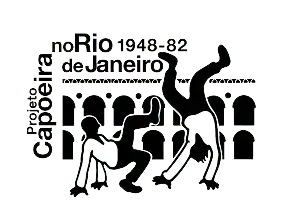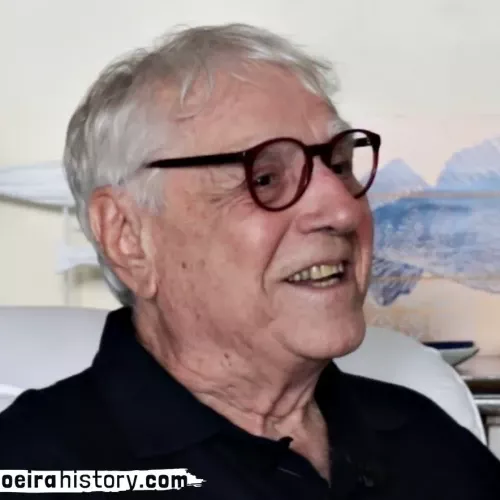Master Silas first saw capoeira in 1952, at the local samba school Unidos da Capela, located in Parada de Lucas, a neighbourhood in the northern zone of Rio.
Geisimara Mattos and Matthias Röhrig Assunção (June 2021).
Silas Luís was born on September 16, 1944 in Rio de Janeiro. He grew up in the neighbourhood of Cordovil, in the northern zone of the city, more exactly on Antônio João street. After the death of his father, at the age of 10, he moved to Brás de Pina, where he still lives today. Impressed by a capoeira presentation at the samba school’s courtyard, in one of the rehearsals, he became motivated and started to learn capoeira and samba duro.
He started training capoeira with Master Índio, a pupil of Master Roque. Later he met Master Mintirinha and started to train with him. Through Mintirinha he met with the most famous masters of that time in Rio: Paraná, Artur Emídio, Deraldo and Zé Grande of the Bonfim group, their master Mário Buscapé, and Garrinchinha (another of Mário’s students). He participated in the creation of the group Kapoarte – Filhos de Abaluaê with his master, Paulão, Piriquito and Korvão in 1965
He took over the direction of the group in 1975, when Master Paulão created another group, the Barravento.
Master participated in the elaboration of the rules for competitions organised in the academy of Zé Pedro, on Uranos Street, no. 497, in 1975.
Afterwards his students of the Kapoarte group (like Jorge Roberto Siqueira, José Fernandes, Jorge Alvarenga Costa, Wladimir da Silva, Milton Bento Cabral and others) stood out in the capoeira competitions which took place in Rio de Janeiro and other states in the following years.
Kapoarte repeatedly led the rounds of the “Interclub Tournament” (Torneio Interclubes) which took place in 1975 and 1976.
Master Silas also took part in several shows in nightclubs where he performed capoeira. One of these places was João Cury’s Sambão da Mãe Sinhá. As a military Air Force officer he was furthermore invited to teach at the Clube dos Taifeiros da Aeronáutica.
He also gave classes in the Maré neighbourhood, where Kapoart has one of its biggest strongholds until today.
According to Master Silas, the spelling of the name Kapoarte (later changed to Kapoart), was inspired by the Kimbundo language, because its spelling has no “c”, only “k”. Thus they decided to spell the name “Kapoarte” with a “k” as a reference to that African language. This also shows his concern in rescuing the African roots of capoeira.
The game of masters Paulão and Silas
The original image of Silas playing with Mestre Paulão Muzenza.
Mestre Silas' jump
The perfection of Mestre Silas’ jump and the plasticity of the image were highlighted.
Silas and Kapoart
The image of Mestre Silas has become an icon of the identity of the Kapoart group.
Active in the capoeira milieu, he participated in important rodas in Rio de Janeiro, such as the famous roda of Central Station held during carnival; the roda of Quinta da Boa Vista and the roda of Penha held on the four Sundays of the Festival of Nossa Senhora da Penha. He was also involved in the formation of the Capoeira Federation in Rio de Janeiro where he was active for many years. Silas trained many Masters (see list) and until today continues his activities in front of his house in Brás de Pina, a place he calls the Quilombo da Kapoart.






